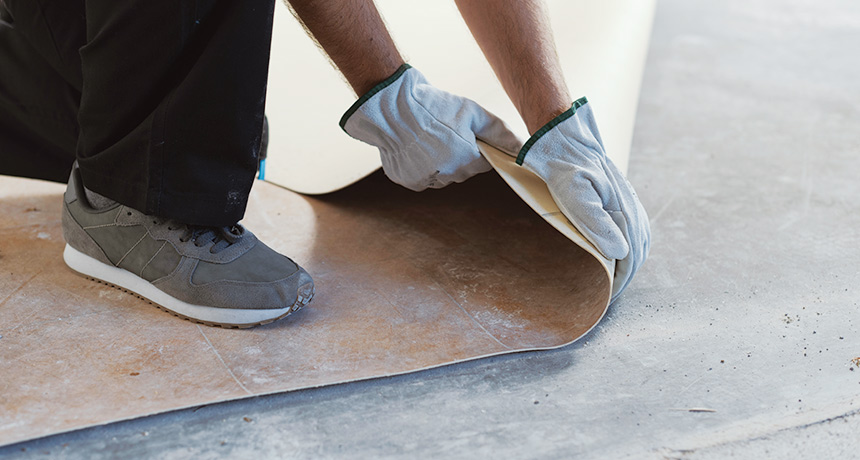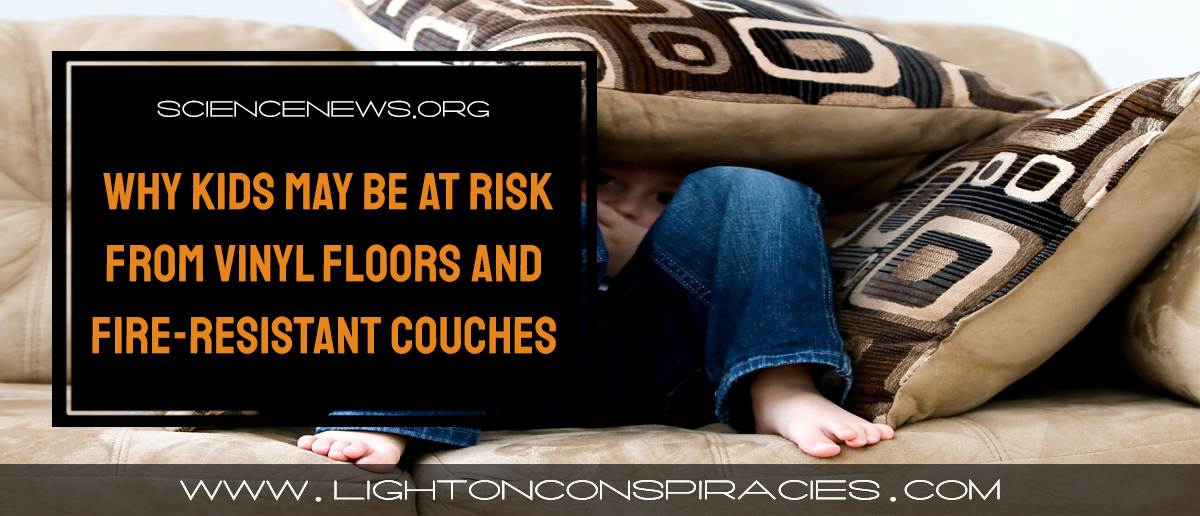Chemicals called semivolatile organic compounds have been linked to health problems

WASHINGTON — Home decor like furniture and flooring may not be notorious polluters like gas-guzzlers, but these indoor consumer products can also be significant sources of potentially dangerous chemicals.
Kids who live in homes with all vinyl flooring or living room couches that contain flame retardants have much higher concentrations of chemicals called semivolatile organic compounds in their blood and urine than other children. Researchers reported those results February 17 at the annual meeting of the American Association for the Advancement of Science.
Manufacturers commonly use semivolatile organic compounds, such as plasticizers and flame retardants, to make electronics, furniture and other household trappings (SN: 11/14/15, p. 10). “Many of these chemicals have been implicated in adverse health outcomes in children — things like ADHD, autism … even cancer,” environmental health researcher Heather Stapleton of Duke University said in a news conference. “It’s important that we understand the primary sources of these chemicals in the home.”
Stapleton and her colleagues investigated the in home exposure to semivolatile organic compounds of 203 children ages 3 to 6. The team collected dust and air samples, along with small pieces of items like couch cushions, from the kids’ homes. The researchers also gathered urine and blood samples from the children.
Children living in homes with all vinyl flooring had concentrations of a by-product of the plasticizer benzyl butyl phthalate in their urine of about 240 nanograms per milliliter on average. Meanwhile, kids living in homes with no vinyl flooring had only about 12 nanograms per milliliter on average. Children with the highest exposure showed 20 to 40 percent of the “reference dose” for benzyl butyl phthalate — that is, the highest daily dose that the U.S. Environmental Protection Agency considers safe to ingest without negative consequences over a person’s lifetime.
The benzyl butyl phthalate exposures that Stapleton’s team found were lower than the EPA’s safety threshold. But it’s unclear how the levels of this chemical in children’s bodies would change over the course of several more years, Stapleton says. Contact with benzyl butyl phthalate has been linked to respiratory and reproductive disorders.
Children from homes with living room sofas that contain flame-retardant polybrominated diphenyl ethers, or PBDEs, had concentrations of these compounds in their blood serum of about 108 parts per billion on average — about seven times higher than other kids. Stapleton’s team still needs to assess how these concentrations compare with the EPA’s reference dose. Exposure to PBDEs has been linked to several cognitive problems, such as lower IQ and hyperactivity, as well as cancer and other diseases.
Glenn Morrison, an environmental engineer at the University of North Carolina in Chapel Hill not involved in the work, says that in retrospect, it makes sense that Stapleton’s team found evidence of semivolatile organic compounds in children’s bodies. But for a long time, there has been a “tacit assumption” among researchers that home furnishings don’t release these compounds quickly enough for them to significantly accumulate in residents’ bodies, he says. The new findings undercut that assumption.
Showering and washing clothing more frequently may curb people’s susceptibility to picking up these chemicals, Morrison says, but “there’s a limit to how well those things work.” Ideally, indoor consumer products should be free of dangerous chemical ingredients, he says. A better understanding of how semivolatile organic compounds build up in the body may inform regulations on which chemicals can be used to make household products, or help customers make better decisions about healthy, safe choices.













